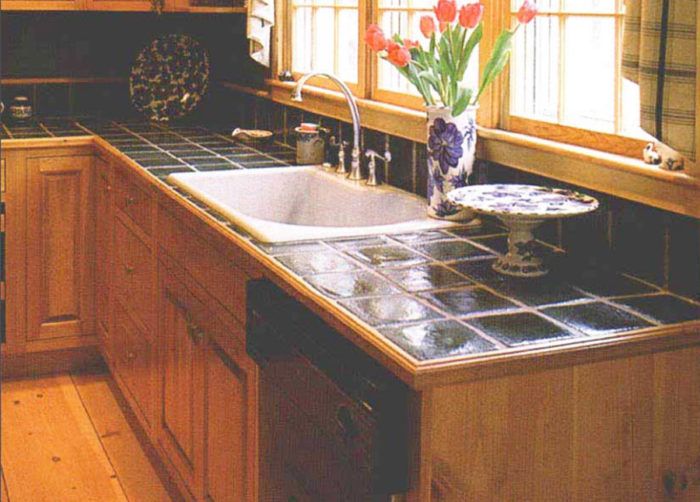Choosing Kitchen Countertops
The perfect marriage of cost, aesthetics and performance is what suits your lifestyle and budget best.

Synopsis: The author summarizes the pros and cons of a variety of materials used for kitchen countertops, from wood butcher block and concrete to tile, solid surface, and stainless steel. the article includes cost estimates and sources of supply for different materials.
Yearning for the good old days? Take a close look at an old kitchen. Even well-appointed houses were likely to have kitchens that look utilitarian, even stark, when compared with what contemporary cooks expect. Counter space often was provided by a built-in cabinet or dresser with a wood top, or even just a big table. Not these days. We want countertops that delight the eye, stand up to heat, keep out food stains, are easy to clean and are more durable than the deck of a battleship.
Amazingly, a variety of materials, both natural and man-made, manages to fit the bill: plastic resins, sheet metal, wood, stone, ceramic tile, concrete, even slabs of quarried French lava. Prices range from less than $5 per sq. ft. for plastic-laminate countertops to $300 per sq. ft. for granite as rare as blue Brazilian bahai.
In addition to their many practical contributions, countertops also make a big visual and tactile impact. The huge variety of materials each with its own range of characteristics and cost allows a kitchen countertop to fit neatly into just about any lifestyle and architectural tradition. Spending thousands of dollars isn’t hard to do, but far more economical alternatives also exist. The only trick is wading through all the options.
Butcher Block:
Built-in cutting boards
Butcher block is one of the few totally natural kitchen-countertop materials. Typically made from strips of hard maple, 1-1/2 in. thick butcher-block counters are glued up to expose wear-resistant edge grain. They can be ordered in sizes up to 12 ft. long and 4 ft. wide for about $30 to $35 per sq. ft. Butcher block can be ordered through local lumberyards and home centers as well as a few large manufacturers. One of them, John Boos & Company, also makes end-grain tops 4 in. thick in sizes up to 60 in. by 38 in. for about $85 per sq. ft.
Among its advantages as a countertop material: It’s easy to work and install, has a visual warmth and pleasing resilience, and can be used as a cutting board. Scratches, scorch marks and other signs of wear and tear can be counted as character, or scraped and sanded away. One drawback is that wood is susceptible to water damage, so butcher block used around the sink should be carefully sealed.
Concrete:
High style, potentially high maintenance
From a design perspective, few countertop materials are as malleable as concrete. Cast upside down in molds or formed in place, concrete counters can be made in virtually any shape and thickness. Made correctly, they are hard, durable, and heat- and scratch-resistant. But cast without proper reinforcement and the correct mix of materials, concrete counters have been known to develop severe cracks as they cure. Even the best of them will stain if not assiduously maintained.
“Sidewalk contractors who do kitchen countertops may be part of the PR problem,” says Jeffrey Girard of Form Works in Raleigh, North Carolina. Counter fabricators such as Girard often cast standard countertops 1-1/2 in. to 2 in. thick, using structural steel and polypropylene fibers to minimize cracking.
For more photos and a breakdown of different kitchen countertops, click the View PDF button below.
Fine Homebuilding Recommended Products
Fine Homebuilding receives a commission for items purchased through links on this site, including Amazon Associates and other affiliate advertising programs.

Smart String Line

Pretty Good House

All New Kitchen Ideas that Work

























